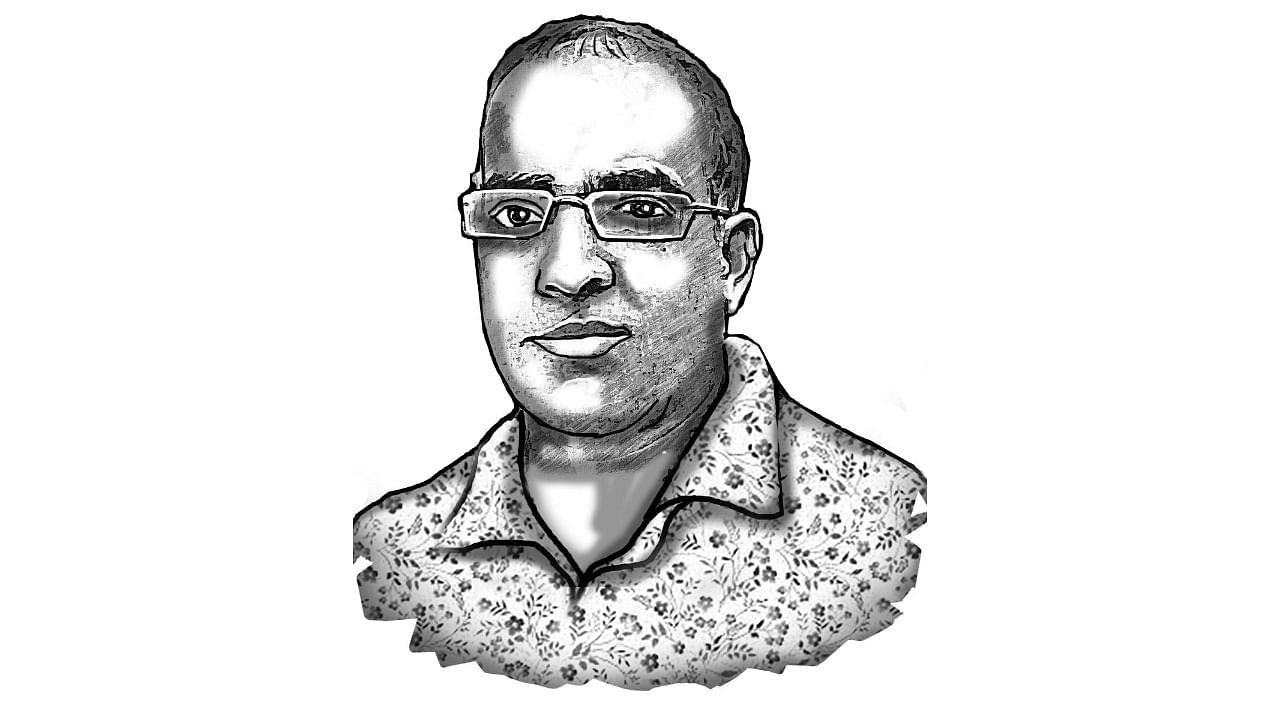
Why are the roads so craggy and broken? Why are the footpaths not walkable? Why is their sewage in the stormwater drain? To each of these questions, over the years we have been hearing technical answers, and sometimes administrative explanations. Even when the terrible infrastructure causes accident deaths, the government’s usual response is to announce ex-gratia payments and a promise to investigate. With that, the whole thing ends.
If the citizens themselves know that the way BBMP resurfaces a road -- by merely sprinkling another layer of tar that will wash off in the next rains -- is it really possible that the ‘engineers’ in the municipality don’t know that? If you and I can see that the colourful drain covers the city keeps building are not really usable as footpaths, don’t the government officials know that? And what about the ministers in charge? What have they been overseeing, if this is the result?
There’s an elephant in the room. There is a political economy of infrastructure in the city, and the rest of the state, too. The easily breakable things that we build are deliberately made that way. They’re not the result of unintentional mistakes by project officials. The right way to do things is well known in each of the projects, but for political reasons the wrong options are chosen always.
Also Read | What makes India’s roads deadliest in the world
Even a high school student knows that water flows better in a cylindrical drain, but all our shoulder drains are rectangular. Why is that? Because BBMP contractors do not know how to make a cylinder. They don’t even have engineering companies in most cases, and very few can even get a mould of a cylinder made in their own factory. They are just some guys who know how to pour cement between drain walls held together by small steel rods.
And why does the municipality choose such contractors instead of real engineering firms? Because these contracts are part of a well-oiled system of giving kickbacks to those who award the contracts -- officials as well as political leaders. In many cases, the firms are actually set up by the decision-makers themselves using proxies. Moreover, poorly done projects break down quickly, which means they have to be tendered again and again. That’s the plan.
We could, of course, choose better contractors who have the engineering skills to build quality infrastructure. And we could ensure that the tendering is not rigged. But from top to bottom, those in charge are firm on not letting these changes happen.
Roads, footpaths, underpasses, flyovers, street lights, bus stops, foot bridges, speed bumps, dividers, parking spaces, garbage trucks, collection centres -- add up all of those things, besides drains, and imagine what a large universe of things is being steered the wrong way, and the number of people who are cooperating in this. The political economy of our infrastructure is very large, and its tentacles reach into the heart of the processes by which we choose what to build, and who should build them.
This is not only in executing projects. It’s also in planning. Everyone knows that we should have an integrated plan for the development of the city. And that we should have a way of coordinating different mobility modes to tackle traffic problems. But we don’t. How is it that something that everyone knows we need is still not done? The political economy won’t let it happen. That’s all there is to it. If it’s good for the city, the ‘system’ will resist it.
It is also not deterred by occasional defeats. The odd lake is reclaimed from encroachers, some ill-thought-out project is opposed successfully by local residents, and the courts sometimes block a little of the madness. But these are the exceptions, while the long and steady assault on the city goes on.
The political economy is so large that it is hurting the real economy very badly. Quality of living is poor in most neighbourhoods, and large businesses are increasingly looking at other cities. The public has been trying to cope by moving to new spaces, but the outskirts too are unplanned and poorly built. As a result, chaotic sprawl in all directions has now been the norm for years. And eventually, the city will swallow those places too, like a boa meeting a fleeing deer.
This is not the version of democracy and representative government that we learn in civics textbooks. This is the one that exists on the ground today, in our city. In fact, the brazenness of it is a challenge to the citizens. The leaders and troops of the political economy are saying, ‘stop me if you can!’